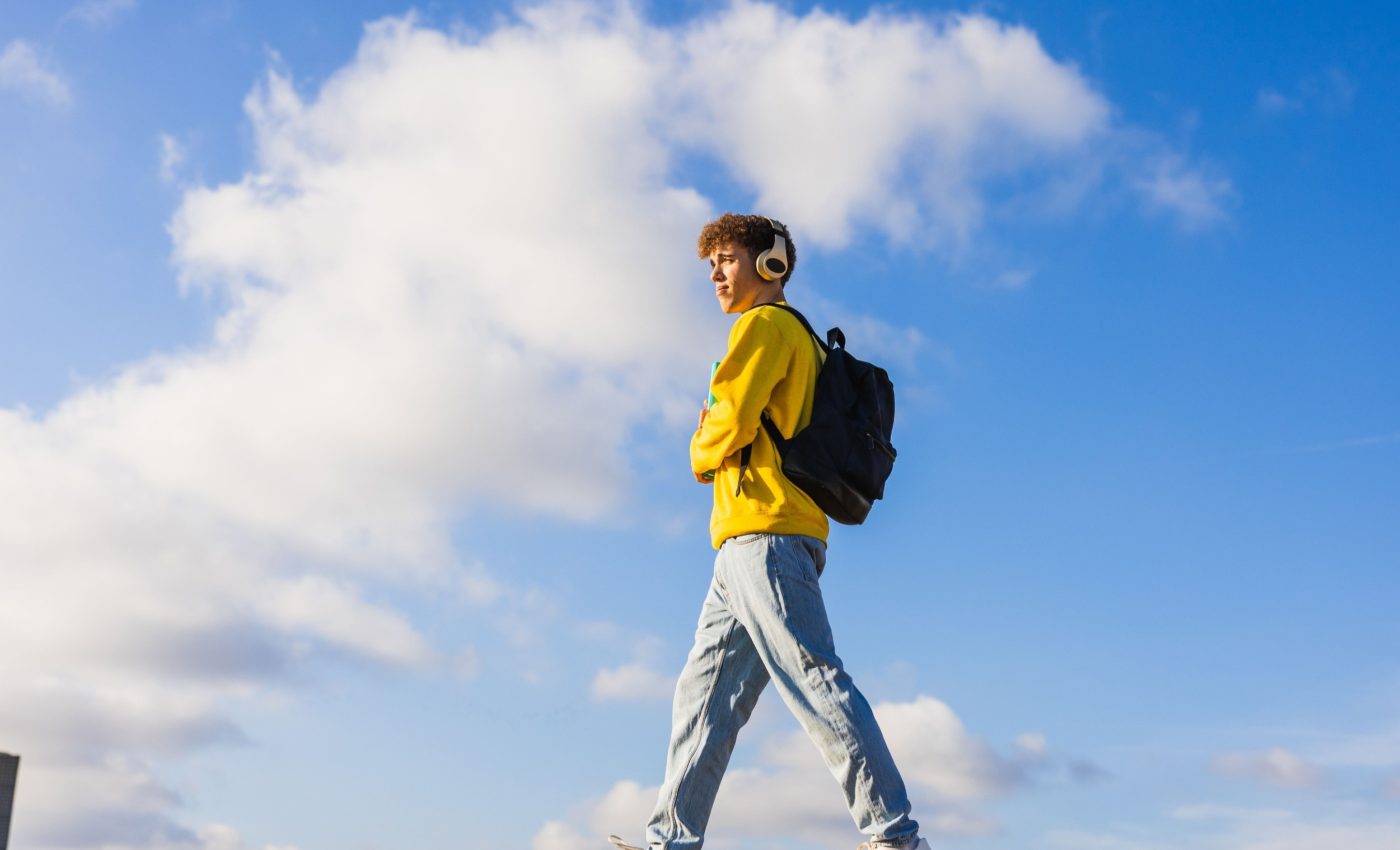
Walking patterns affect the way the brain hears sounds
We tend to think of hearing as a passive process, but your brain is busy rebalancing sound while you move. A new study reports that the route you take while walking changes how strongly your brain responds to sounds.
The team tested people who walked a figure eight while listening to streams of tones, then compared that with standing or stepping in place.
Brain responses to sound grew during real walking, and they shifted with turn direction, hinting that attention moves with the body.
Brain shifts when you walk
Liyu Cao of Zhejiang University led the work with colleagues in Germany and China. The aim was simple and gutsy: to link everyday movement to moment-by-moment changes in hearing in the brain.
The researchers recorded brain signals using an electroencephalogram and a mobile setup worn like a cap.
This method is often called mobile EEG. The approach has been shown to capture reliable brain activity, even while people are walking.
One result many labs now see is a drop in visual cortex alpha power during walking. This is a sign of reduced inhibition in sensory areas and it can open the gate for incoming information.
Prior work found that alpha power drops while walking and that this change tracks with the rhythm of each step.
How the experiment worked
Thirty adults followed a looping figure eight path while listening to continuous tones that gently varied in intensity.
The design let the researchers compare true locomotion with standing still or stepping without moving forward.
They focused on an auditory steady-state response (ASSR), which is a repeating brain response to rhythmic sound.
It can be read reliably during movement, with wearable EEG equipment. Stronger ASSR means the brain has become more synchronized to the sound stream.
In a second phase, the team inserted brief tone bursts into one ear or both ears to jolt the ongoing response.
Those bursts disrupted the ongoing pattern most when presented to a single ear during walking, suggesting that the moving brain gives extra weight to sound from the periphery.
While walking, your brain changes focus
“Specifically, during turns, the brain prioritizes auditory input from the side of turn direction before the turn apex, then shifts preference to the opposite side,” wrote Cao.
That pattern lines up with the demands of turning through space. Early in a turn, favoring the ear on the inside of the turn could help track where the body is headed, then flipping focus could ready the outside ear to catch new events.
The study also found that increased entrainment to the sound stream during walking went hand in hand with decreased alpha power across people.
That paired change fits an efficient strategy: tone up inputs that matter right now, tone down the rest.
Why this matters outside the lab
Locomotion is a constant in daily life, and most hearing happens while we are on the move.
Recent work shows stride phase timing shifts visual detection performance while walking, so it makes sense that auditory processing would also be tuned to the cycle of steps and the direction of travel.
Designers of assistive hearing devices and spatial audio in headsets could take a page from this.
If the brain already raises sensitivity to sounds on the side you are turning toward, systems might gently follow that bias rather than fight it.
There is also a safety angle that is hard to ignore. If walking naturally suppresses predictable self generated sounds and boosts responses to novel, side arriving sounds, navigation in busy places could get quicker and safer.
Limits and next steps
Recording while people walk is not trivial, since muscles and motion can mix with brain signals.
Years of method work show that, with the right tools, brain responses can be measured during standing and walking without losing key features. However, careful checks remain vital during real world tests.
The new findings invite sharper questions about source and timing.
Do vestibular cues from turns, head orientation, and eye movements combine to steer auditory attention, or does one channel lead and the others follow?
Future studies can probe louder, messier soundscapes and add tracked obstacles to test how flexible this attention shift is.
Training studies might also ask whether people can learn to speed up this ear-specific reweighting when it could help them the most.
Brain adapts with walking
The core idea is clean: the moving brain performs active sensing, it adjusts what it samples from the world as goals and body state change.
Tuning the ear that matters for the next fraction of a second is one way to keep that loop tight.
None of this means hearing while standing still is weak, it is simply different. Walking seems to push the system to filter what you cause yourself and to catch what you did not predict.
Walking tasks while testing the brain
The results also suggest new ways to test attention in clinics and field settings. Instead of only seated tasks, brief walking tasks could reveal hidden difficulties that only appear when attention and movement must coordinate.
The figure eight path used here neatly separated left and right turns without adding confusion.
Other routes could be tested to see whether sharper turns, longer arcs, or stairs produce stronger or weaker ear-specific effects.
The one ear burst result is worth watching. It hints that, in motion, your brain pays special attention to a single channel of new input arriving from the side, which is exactly where surprises tend to come from.
The study is published in JNeurosci.
—–
Like what you read? Subscribe to our newsletter for engaging articles, exclusive content, and the latest updates.
Check us out on EarthSnap, a free app brought to you by Eric Ralls and Earth.com.
—–













